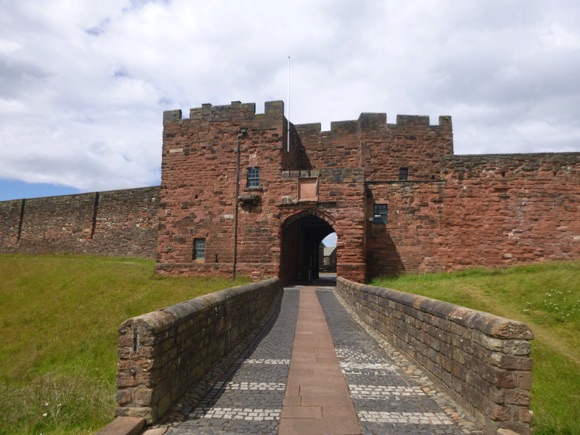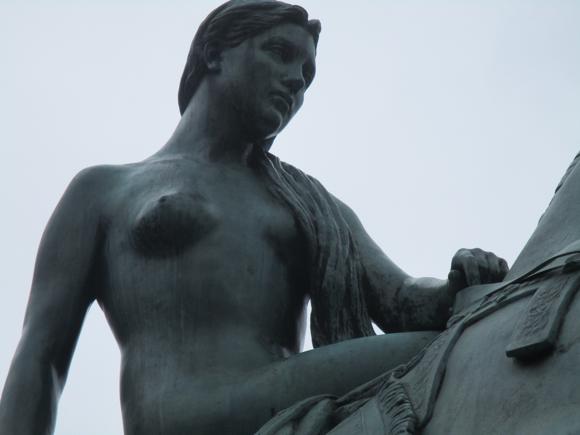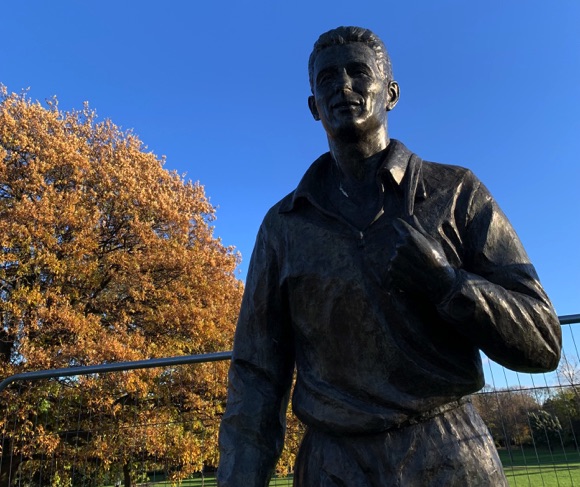Teams, tales and tips – a guide to the local game
Many places can lay claim to being the cradle of football. Sheffield was where the first club was formed, London was where the FA was first convened. But before either of these important events, the Cambridge Rules were drawn up at Trinity College in 1848. These were the basis of the modern-day game as we know it.
Cambridge, a varsity town without a Football League club until 1970, can therefore be considered the home of football. There’s a plaque to prove it, at Parker’s Piece, a 25-acre plot of land used for local recreation for centuries. It was here, beside some of the most prestigious seats of learning in the Western world, that the Cambridge Rules were first put into practice.
In 1882, also on Parker’s Piece, a Cambridge University team first fashioned a style of play that encouraged passing over individual dribbling, the very essence of football. A year later, this same team lined up in 2-3-5 pyramid formation, adopted by all football teams around the UK until the 1960s at least.

Sport in Cambridge, mainly rowing and rugby, has always been part of student life. It took 60 years from the drafting of the Cambridge Rules before locals formed the first football club here.
Cambridge Town could have been a Football League club long before today’s League Two side, Cambridge United.
Founded in 1908, Town won five Southern Amateur League titles after World War I, local rivals Ipswich Town notching four. When the Football League, keen to widen its net in East Anglia, offered both clubs the chance to apply for Third Division status, Ipswich jumped at the chance, Cambridge Town stayed amateur.
The decision eventually opened the door for Cambridge United, first known as Abbey United, to become the leading local club.

In 1951, Town laid claim to the name Cambridge City as Cambridge itself officially changed status. United, too, had applied. Based in the Abbey area of north-east of Cambridge, playing on pitches at Stourbridge Common and Newmarket Road, The U’s were at an amateur level several notches below Town’s at the time. Abbey duly became Cambridge United.
Cambridge City, the Lilywhites, went from strength to strength, attracting four- and sometimes five-figure crowds for Southern League games at the City Ground on Milton Road in Chesterton. North of the river Cam from their lesser neighbours, The Lilywhites won the Southern League in 1963.
Close behind them, by three points, were Cambridge United, who had only reached the Southern League Premier two years earlier. Ever ambitious, the U’s regularly applied for Football League status while City remained firmly amateur – until relegation in 1968.
While the Lilywhites agonised over turning semi-professional, United became a Football League club in 1970. Within three years they were promoted, within eight, promoted again.

With crowds down to the hundreds, despite dwindling finances Cambridge City were able to maintain a high status in the non-league game – but not the dilapidated facilities of Milton Road. Its swansong was a televised FA Cup tie in 2013, City’s first ever advance to the Second Round, a 1-0 defeat to MK Dons.
The club’s plight could have been much worse, though. In 2006, the board announced its intention to not only sell Milton Road but to move into United’s Abbey Stadium – and become nothing but a feeder team for the professional club.
Though demoted from the Conference South to the Southern Premier because of unsuitable facilities, the club was saved by the Cambridge City Supporters’ Trust, who took control and arranged groundshares with Histon and St Ives Town.
On the table is a long-planned move to a new-build at Sawston, some 10km south of Cambridge. In 2021, the Lilywhites were shifted from the Isthmian to the newly formed Northern Premier League Midlands Division.
Getting Around
Arriving in town, local transport and timings

Stansted is the nearest airport to Cambridge, 47km (29 miles) away. A National Express coach runs every 1-2hrs to Cambridge (from £5 advance single, 50min journey time).
London Luton is 63km (39 miles) away. A National Express coach runs via Stansted Airport to Cambridge (from £20 advance single, 3-4hr overall journey time).
National Express buses use the Cambridge (Parkside) terminus beside Parker’s Piece by the town centre. Nearby, up Parkside/Parker Street, is the main hub for local buses.
From London, the cheapest train to Cambridge is from Liverpool Street with Greater Anglia (advance singles £9, journey time 1hr 15mins). With Great Northern from Kings Cross, Cambridge can be reached in 50mins, but it’s around £30.
From Birmingham, the direct CrossCountry service (£30, 2hrs 45mins) is every hour. From Manchester Piccadilly, change once at Ely or twice in London, cheapest advance tickets £45, 3hr 30min-4hr journey time.
Cambridge train station is more than a mile south of town. Bus stops line Station Place outside. Stagecoach East runs most of the local services, including the regular citi 1 and 3 from stop 7, and citi 7 from stop 6 into town. The citi 3 then goes to Newmarket Road and the football ground. A Stagecoach dayrider is £4.50 – or adding a PlusBus (£3.80) to your train ticket allows all-day use of Stagecoach and Go-Whippet/Busway services that also run from the station.
CamCab (01223 704 704) are based close to the football ground and provide transfers from several airports, Stansted and Luton in the £50-£60 range.
Where to Drink
The best pubs and bars for football fans


As many pubs dot the historic centre of Cambridge as colleges, some with riverside locations, many with TV sport.
Those near the city’s retail hub, the Grafton Centre, attract fewer students than around the Cam. These include the Duke of Cambridge, with its popular kitchen, ales and beer garden, and the nearby Tram Depot, known for its live music, comedy acts and food.
On the other side of the Grafton Centre is King Street, known for its pub-crawling games – the King Street Run has been in place long before that, and is now an honest, busy hostelry that goes big on TV sport.
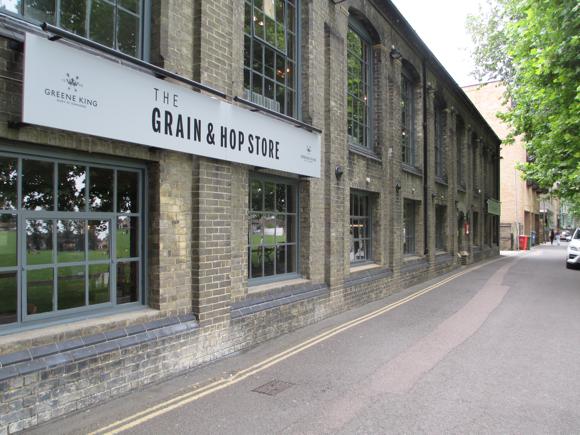


Tucked away on a quiet street corner, halfway between the shopping centre and the stadium, the Dobblers Inn is a real community pub with five large screens for sport, a beer garden and drinks deals on pints.
By the Grand Arcade, The Regal is the city’s Wetherspoon, fashioned out of a pre-war cinema. Near there, Grain & Hop Store is also food- and ale-focused, with TV football in the bar upstairs, overlooking Parker’s Piece.
Just across the Cam, The Portland puts the focus on live football and live music at a long-established pub, with three rooms to let upstairs. Also on that side of the river, the refurbished Sir Isaac Newton has screens big and small for sport-gawping, board games and superior pub grub.
Where to stay
The best hotels for the ground and around town


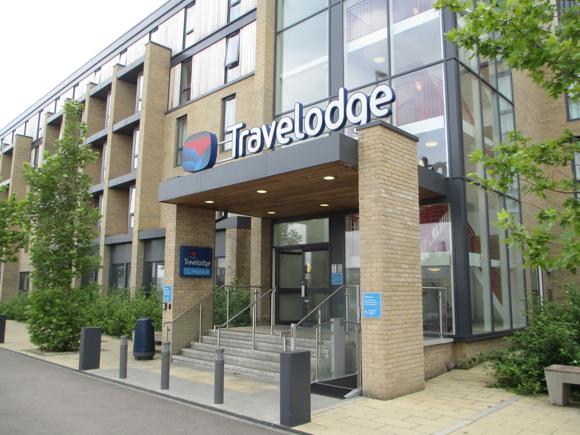


Visit Cambridge has a limited hotel database.
Most of the major chains, upscale, budget and otherwise, have a presence. Those walking distance from the football ground tend to be at the cheaper end of the scale, such as the Premier Inn Cambridge City East and the nearby Travelodge Newmarket Road. Each has sister venues elsewhere in town, Travelodge near the station, bizarrely called ‘Central’.
There are also B&B options near the Abbey Stadium, including the lovely Autumn House, a few strides from the ground, its modern, en-suite rooms with CD players, tea and coffee, free toiletries and WiFi.
The centre is full of stand-out hotels, including The Varsity, with its stunning rooftop bar and spa, and the Regent by Citystay, a gorgeous Georgian house overlooking Parker’s Piece, in place when students first played football just beyond.
















